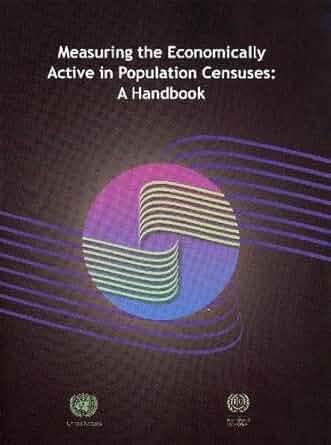
Many people struggle to understand who makes up the workforce and how it affects the economy. The economically active population includes everyone working or looking for work, such as job seekers, selfemployed people, and those counted in unemployment statistics.
This blog explains what the economically active population is, why it matters, and how experts measure labor force participation rates. Read on to see why these numbers shape our daily lives.
Key Takeaways
- The economically active population includes people who are working or looking for work, like job seekers and the self-employed.
- Experts use tools such as the labor force participation rate to measure how many people take part in economic activity.
- Data on this group comes from national sources like NBER (National Bureau of Economic Research) and CES (Current Employment Statistics).
- Age and education level affect workforce participation; younger and more educated people often have higher employment rates.
- Policymakers study these numbers to understand trends, address job challenges, and support a healthy economy.
Definition of Economically Active Population
The economically active population includes all individuals who are either employed or actively seeking work. This group plays a crucial role in driving economic production by contributing to the labor supply and overall employment landscape.
Measuring the Economically Active in Population Censuses: A Handbook (Studies in Methods (Ser. F)) Paperback – December 31, 2010
Includes employed and unemployed individuals who contribute to the production of goods and services
The economically active population consists of both employed and unemployed individuals. These people engage in economic activities that drive the production of goods and services.
Employed individuals work in various occupations, contributing to the labor supply. Unemployed individuals actively seek jobs, wanting to join the workforce and support economic growth.
This group plays a crucial role in the labor market. They enhance productivity by supplying their skills and efforts. The labor force participation rate measures how many people are involved in this economic activity.
Understanding these dynamics helps analyze employment trends and assess overall economic health.
Measured by labor force participation rate
Economically active individuals play a crucial role in any economy. This includes those who are employed as well as job seekers and the unemployed. To understand their impact, we measure the labor force participation rate.
This statistic shows the percentage of people actively involved in economic activities.
A higher labor force participation rate indicates a strong workforce and robust economic activity. It reflects both employment levels and unemployment rates within different demographics.
Policymakers use this data to analyze trends in self-employment and overall labor supply. Understanding these dynamics helps communities address workforce challenges effectively while promoting inclusive economic participation for all segments of society.
Data and Statistics on Economically Active Population
The economically active population includes both employed and unemployed individuals who engage in the labor market. National surveys and databases provide vital statistics, showing demographic details like age and education levels.
Sources include national surveys and databases, such as NBER and CES
National surveys and databases provide critical information about the economically active population. The National Bureau of Economic Research (NBER) and the Current Employment Statistics (CES) offer valuable data on workforce dynamics.
They measure labor force participation, employment rates, and unemployment figures. These resources break down statistics by age, education level, and self-employment status.
Data from these sources helps policymakers understand economic activity in real-time. Job seekers can also use this information to assess their chances in various industries. Tracking trends allows both employers and employees to make informed decisions about hiring and job searching.
Analyzing such data enhances our understanding of the labor supply landscape in America.
Demographic breakdowns, such as age and education level, are available
Demographic breakdowns reveal crucial insights into the economically active population. Age groups show different participation rates in the labor force. Younger individuals often seek jobs to gain experience, while older workers may focus on long-term careers or self-employment opportunities.
Education level also plays a significant role in employment statistics. Highly educated workers typically secure better positions within the production workforce. In contrast, those with lower education levels might face higher unemployment rates and limited job prospects.
Understanding these dynamics aids policymakers in addressing issues related to economic activity and labor supply effectively.
FAQs
1. What does “economically active population” mean?
It refers to all people in a country who are part of the workforce, including those with employment and job seekers. This group supplies labor for producing economic goods.
2. How do you measure labor force participation?
Labor force participation measures the share of people working or looking for work compared to the total adult population. It includes both selfemployed individuals and employees.
3. Who is included in the unemployment count?
Unemployment covers people without jobs but actively seeking work, such as job seekers and some selfemployed persons between opportunities.
4. Why is tracking economic activity important for a country?
Tracking economic activity helps leaders understand how many citizens contribute to production and services through employment or selfemployment; this supports better planning for future workforce needs.




